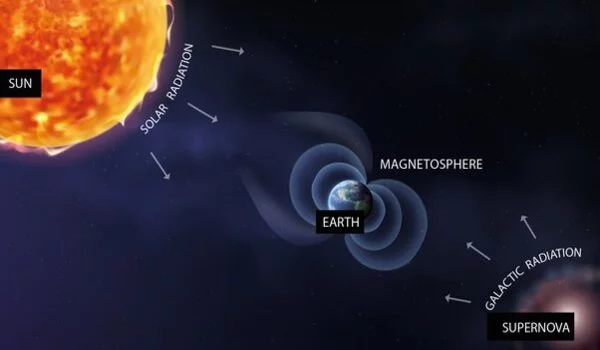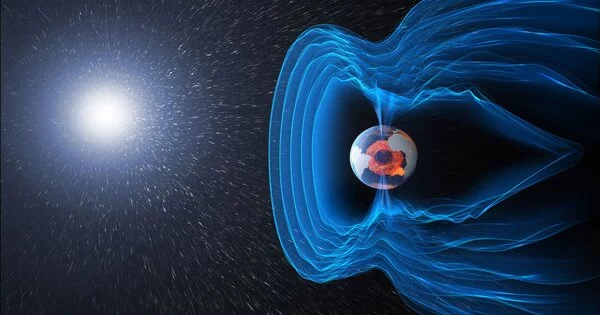Geomagnetic storms occur when space weather collides with Earth. Space weather is caused by solar fluctuations that send electrons, protons, and other particles into space. Measuring the speed and size of coronal mass ejections (CMEs) as they erupt from the sun has been found to be critical in providing accurate early warnings that keep astronauts and technology safe.
Scientists have discovered that space weather forecasters must predict the speed of solar eruptions as well as their size in order to protect satellites and astronauts’ health. NASA has collaborated with the National Oceanic and Atmospheric Administration (NOAA) to develop the most accurate severe weather forecasts possible. The National Weather Service (NWS) of NOAA is the federal agency in charge of issuing weather forecasts and warnings to the general public.
When severe thunderstorms and tornadoes strike, communities frequently have only a few minutes to respond. New NASA technology and satellite data are providing weather forecasters with the tools they need to improve warning lead times, which is critical in ensuring the public has enough time to seek shelter before a storm.
Scientists at the University of Reading found that by calculating the speed of coronal mass ejections (CMEs) when they hit Earth, forecasters could provide more useful early warnings. This would help operators of critical infrastructure such as satellites know if they need to take evasive action or switch off systems to protect them, and warn astronauts when they need to shelter inside shielded parts of the International Space Station.
Not all coronal mass ejections trigger a severe storm, which means just by looking at the sun for activity, we get a lot of `false alarms’ where action is taken that isn’t needed. While it is better to be safe than sorry, especially with the health of astronauts, sometimes the costs of repeatedly taking unnecessary action to protect a satellite network could prove more costly than the potential space-weather damage itself.
Professor Mathew Owens
Coronal mass ejections are caused by massive solar eruptions that travel through interplanetary space, disrupting the Earth’s magnetic field system. It is possible to predict the arrival time of a CME at Earth by using solar imagers to measure the speed of CMEs close to the Sun.
Operators of technological systems vulnerable to space weather, such as satellites, have the opportunity to take action to limit the damage. Scientists believe that such warnings could be more effective if combined with more sophisticated information about the severity of a storm when it hits Earth.
Professor Mathew Owens, space scientist at the University of Reading’s Department of Meteorology, said: “Not all coronal mass ejections trigger a severe storm, which means just by looking at the sun for activity, we get a lot of `false alarms’ where action is taken that isn’t needed.”

“While it is better to be safe than sorry, especially with the health of astronauts, sometimes the costs of repeatedly taking unnecessary action to protect a satellite network could prove more costly than the potential space-weather damage itself.”
Due to the possibility of disrupting computers, communication networks, and electricity systems, space weather is regarded as one of the most serious threats to the United Kingdom and many other countries. Billions of dollars are currently being spent on new spacecraft and systems to better forecast and measure volcanic eruptions.
The researchers outline a new way to quantify the value of knowing CME arrival time in their new study, which was published in the scientific journal Space Weather. They demonstrate that the speed of the CME at Earth is a useful additional piece of information that can be used to reduce the number of false alarms and increase the value of forecasts.
NASA’s Short-term Prediction Research and Transition (SPoRT) Center at NASA’s Marshall Space Flight Center is working with NWS meteorologists across the southern United States to improve severe weather forecasting. SPoRT provides real-time lightning data to surrounding NWS forecast offices for use in weather warning decision making.
Data from the ground-based Lightning Mapping Array in northern Alabama is also being used by scientists to better understand the relationship between lightning flash rates and tornado-producing thunderstorms. The program has already shown to be beneficial. Based on NASA lightning data, forecasters in Huntsville, Alabama, were prompted to issue a tornado warning during a severe weather outbreak. A minor tornado touched down shortly after the warning was issued.
According to the scientists, their new discovery will help to guide future efforts to improve space weather forecasts, thereby protecting critical infrastructure and astronaut health in the future.





